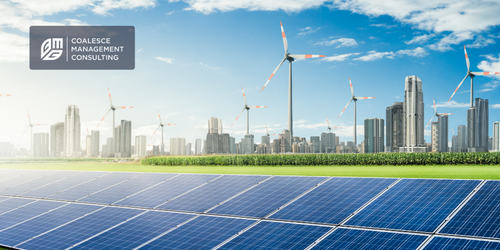The United States has made significant strides in harnessing renewable energy sources, particularly solar and wind power, to combat climate change and transition towards a sustainable energy future. However, despite the growing popularity of renewable energy, there are numerous challenges facing companies working to connect solar and wind farms to the grid. These challenges range from infrastructure limitations to regulatory hurdles. In this article, we will explore the key issues faced by renewable energy companies when integrating solar and wind farms into the grid in the USA.
Grid Infrastructure and Capacity Constraints
One of the primary challenges that renewable energy companies face is the limitation of the existing grid infrastructure. Many solar and wind farms are located in remote areas with insufficient grid capacity to transmit the electricity they generate to urban or industrial centers where it is needed. Upgrading the grid to accommodate the intermittent nature of renewable energy sources can be a costly and time-consuming endeavor.
Intermittent Energy Generation
Solar and wind power generation is inherently intermittent, dependent on weather conditions and time of day. This variability poses challenges for grid operators in managing supply and demand effectively. When the sun isn't shining, or the wind isn't blowing, there may be a shortfall in electricity generation, requiring backup sources like fossil fuels or energy storage solutions. This intermittency complicates grid integration and stability.
Lack of Standardization
Renewable energy technologies are rapidly evolving, leading to a lack of standardization in equipment and protocols. This can complicate the process of integrating new solar and wind farms into the grid, as each may use different inverters, control systems, and communication protocols. Standardization efforts are ongoing but can be slow to catch up with the pace of renewable energy development.
Regulatory Hurdles
Regulatory challenges can vary from state to state, making it difficult for renewable energy companies to navigate the complex landscape. Regulations often determine how renewable energy projects are compensated for the power they generate, how they can connect to the grid, and what types of grid upgrades are required. Regulatory uncertainty can delay projects and increase costs.
Energy Storage
Energy storage is critical for mitigating the intermittency of renewable energy sources. While battery technology is advancing, it is still relatively expensive. Renewable energy companies often face challenges in securing financing for energy storage solutions, and integration into the grid can be complicated due to technical and regulatory factors.
NIMBY Opposition
Not-In-My-Backyard (NIMBY) opposition can pose a significant challenge for renewable energy companies. Local communities may resist the development of solar and wind farms in their vicinity due to concerns about aesthetics, noise, or perceived impacts on property values. Overcoming these objections requires effective community engagement and addressing concerns.
Transmission Line Challenges
In many cases, connecting remote solar and wind farms to the grid requires the construction of new transmission lines. This process can be lengthy, costly, and face opposition from environmental groups and local communities. Securing permits and rights-of-way for transmission lines can be a major hurdle for renewable energy projects.
Conclusion
The integration of solar and wind farms into the grid in the USA is a crucial step toward achieving a sustainable and renewable energy future. However, renewable energy companies face a multitude of challenges in this endeavor, ranging from grid infrastructure limitations and intermittent energy generation to regulatory hurdles and NIMBY opposition.
Addressing these challenges requires a collaborative effort among government agencies, utilities, and renewable energy developers. Investing in grid infrastructure upgrades, standardizing technologies, and developing clear and consistent regulations are essential steps. Moreover, community engagement and education can help alleviate local opposition, while advancements in energy storage technologies can improve the reliability of renewable energy sources.
Despite these challenges, the growth of renewable energy in the USA remains promising. As technology continues to advance and public support for clean energy solutions grows, the renewable energy sector can overcome these obstacles and play a pivotal role in reducing carbon emissions and combating climate change.
Coalesce Management Consulting is helping developers overcome challenges throughout the renewables sector, by ensuring they have access to experienced experts across solar, wind, battery storage and grid infrastructure engineering.
We can deliver expertise across:
- Designing and implementing innovative solutions to improve the reliability and resilience of connections and grid infrastructure.
- Improving system efficiency: analysing existing transmission and distribution networks to identify areas for improvement.
- Increasing the integration of renewable energy sources into the transmission and distribution network.
- Undertaking the actual construction work involved in the infrastructure building and upgrade projects.
- Ensuring safety for the public and the environment by conducting risk assessments, developing safety protocols, and implementing measures to minimise the risk of accidents and damage to the environment.
Our experts are available for projects of any size across the States and will work with you from start to finish. Get in touch with our dedicated renewable energy teams today to learn more about what we can do for your project.


